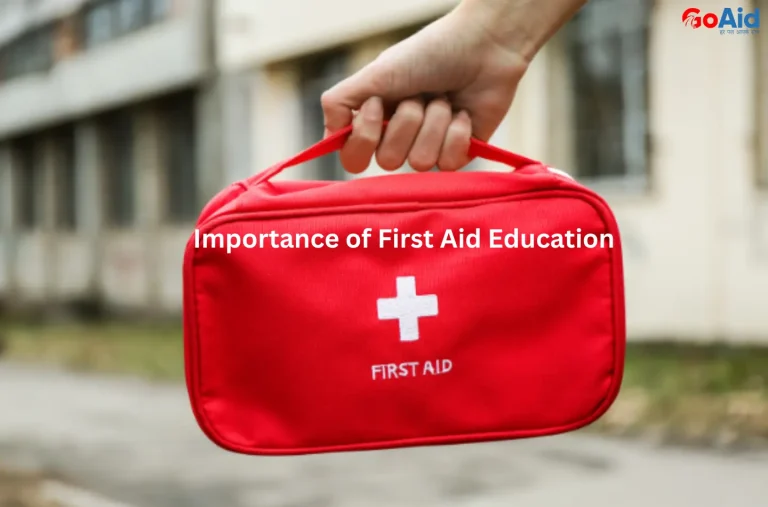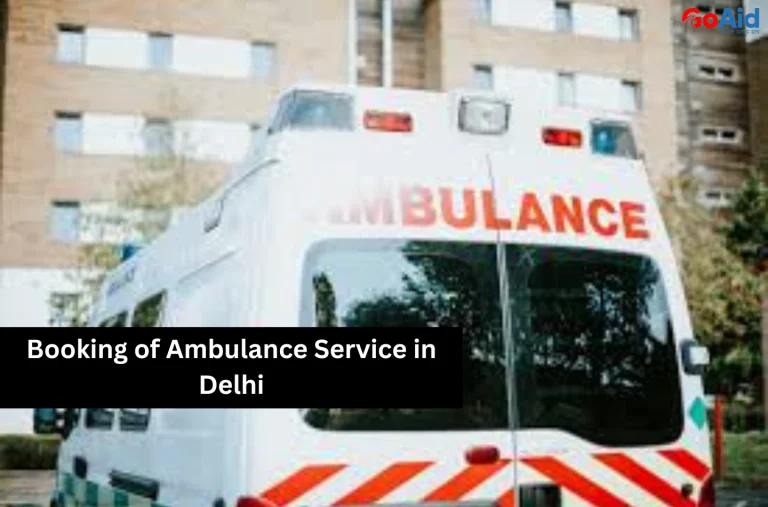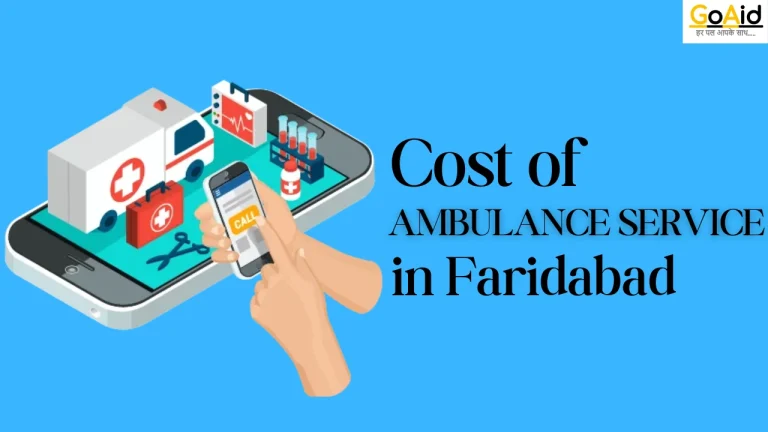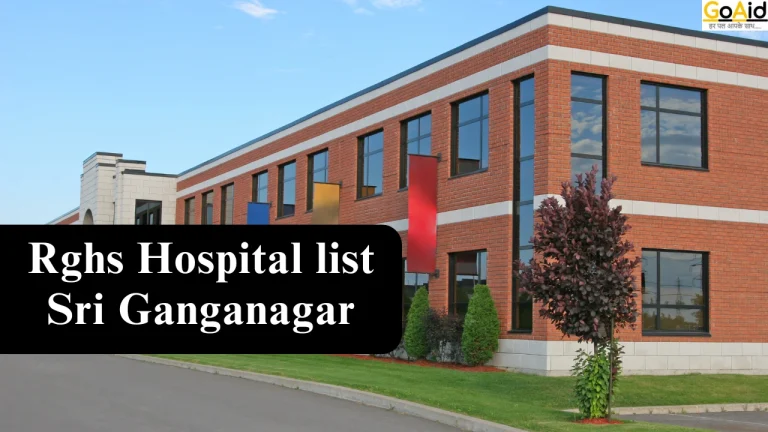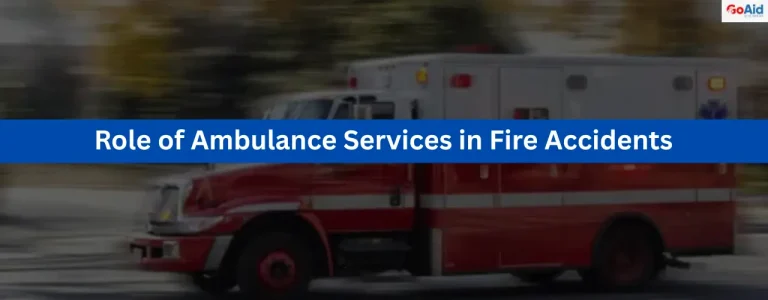Road accidents can happen anytime, anywhere, and how you respond in those first few minutes can make the difference between life and death. Many people panic or act without knowing the right steps, which can unintentionally worsen injuries.
Knowing how to provide basic first aid, ensure safety at the scene, and call for emergency help immediately can save valuable time. ThatŌĆÖs where GoAidŌĆÖs quick-response ambulance services play a vital role by reaching accident locations within minutes to offer professional medical care.
This is why, in this blog, we have provided you all the details about what to do after an accident, how to give first aid, when and how to contact GoAid Ambulance, and the common mistakes to avoid during road emergencies. Are you willing to know about all these points in detail? Then read this blog to the end.
So, letŌĆÖs start ŌĆō
What Should You Do Immediately After an Accident?
After a road accident, quick, calm, and systematic action can save lives and prevent further injuries. Knowing the correct steps ensures the safety of victims, bystanders, and yourself while waiting for professional help. Here are the key actions to take immediately:
- Ensure Your Safety First
Before approaching the accident scene, check your surroundings for traffic, fire hazards, or other dangers to avoid putting yourself at risk while helping others.
- Call Emergency Services Immediately
Dial the GoAid ambulance hotline or local emergency number without delay. Provide precise location details and describe the severity of injuries for rapid assistance.
- Assess VictimsŌĆÖ Condition
Check the consciousness, breathing, and visible injuries of the victims. Identify critical signs like severe bleeding, unconsciousness, or difficulty breathing to prioritize urgent care.
- Do Not Move Seriously Injured Patients
Avoid moving victims with suspected head, neck, or spinal injuries unless there is imminent danger, as improper handling can worsen their condition.
- Stop Any Severe Bleeding
Use clean cloth or bandages to apply gentle pressure on wounds to control bleeding until medical professionals arrive.
- Keep Victims Calm and Reassured
Talk to the victims calmly, reassure them help is on the way, and prevent panic, which can worsen shock and other injuries.
- Clear the Accident Area if Safe
If possible, move obstacles or direct traffic to prevent further accidents, while maintaining safety protocols for yourself and others.
- Provide Basic First Aid if Trained
Administer CPR, wound dressing, or other emergency care only if you are trained, to avoid causing harm inadvertently.
- Gather Important Information
Collect details about the accident, vehicles involved, and medical history of victims to share with paramedics and police if required.
- Stay With the Victim Until Help Arrives
Remain present, monitor vital signs, and follow instructions from emergency dispatchers or paramedics to provide continuous support until the ambulance reaches the scene.
How to Provide First Aid to Accident Victims?
Providing proper first aid immediately after a road accident can stabilize the victim, prevent complications, and save lives. HereŌĆÖs how to administer first aid in a structured way:
- Check Responsiveness and Breathing
Assess whether the victim is conscious and breathing. If unresponsive, gently tap their shoulder and speak to them. For breathing difficulties, position the patient safely and prepare to perform CPR if needed.
- Control Bleeding
Apply clean cloths or bandages to wounds with steady pressure. Avoid removing embedded objects. Keeping the victim calm while controlling bleeding reduces the risk of shock.
- Stabilize the Neck and Spine
Do not move victims with suspected spinal injuries. Support the head and neck to prevent further damage while awaiting professional help.
- Perform CPR if Necessary
If the victim is not breathing or has no pulse, perform CPR immediately. Follow proper chest compressions and rescue breaths while calling emergency services for guidance.
- Treat for Shock
Lay the patient flat, elevate legs if possible, and cover them with a blanket. Keep them calm and hydrated, monitoring vital signs until help arrives.
- Clean Minor Wounds
For small cuts or abrasions, rinse gently with clean water and cover with sterile gauze to prevent infection. Avoid using harsh chemicals or ointments.
- Monitor Vital Signs Continuously
Observe the patientŌĆÖs breathing, pulse, and responsiveness regularly. Report any changes to emergency responders when they arrive. This ensures they can provide immediate advanced care.
When and How to Call GoAid Ambulance Services?
During a road accident, calling a professional ambulance is critical for quick and safe medical intervention. Knowing when and how to call can save crucial minutes.
When to Call?
Call GoAid Ambulance immediately in cases of severe bleeding, unconsciousness, breathing difficulties, chest pain, suspected fractures, head or spinal injuries, or multiple casualties. Even moderate injuries that may worsen should prompt an ambulance call. This ensures professional medical support en route.
How to Call?
To book a GoAid Ambulance, dial 8008280020. Clearly explain the accident location, number of injured persons, and severity of injuries. Follow the operatorŌĆÖs instructions, stay on the line, and provide additional details if requested for rapid dispatch.
Mistakes You Must Avoid While Helping Accident Victims
During road accidents, good intentions can sometimes lead to harmful actions. Avoiding common mistakes ensures victims receive proper care while waiting for an ambulance. This minimizes complications and increases survival chances. Here are key errors to avoid:
- Moving Seriously Injured Patients
Shifting patients with head, neck, or spinal injuries without professional guidance can worsen trauma and cause permanent damage. Only move victims if there is imminent danger.
- Ignoring Personal Safety
Failing to assess the accident scene can put helpers at risk from traffic, fire, or hazardous materials, creating additional casualties and preventing effective aid.
- Delaying Emergency Call
Waiting to see if injuries improve wastes critical time. Immediate ambulance contact ensures timely professional intervention and increases the patientŌĆÖs chance of survival.
- Incorrect CPR or First Aid
Performing first aid or CPR without proper knowledge can worsen injuries. Only provide assistance within your training, and follow dispatcher instructions carefully.
- Crowding the Victim
Too many bystanders can create confusion, obstruct paramedics, and increase stress for the patient. Assign clear roles and maintain an organized space around the victim.
- Giving Food or Water
Providing food or drink to unconscious or severely injured patients can cause choking or complications, particularly before medical assessment.
- Panicking or Losing Calm
Emotional stress can impair judgment, delay action, and cause errors. Staying calm ensures better decision-making and reassures the patient during a traumatic situation.
- Neglecting Vital Sign Monitoring
Failing to observe breathing, pulse, or responsiveness may prevent early detection of life-threatening changes and hinder paramedics from providing timely care.
- Using Unsafe Transport
Transporting victims in personal vehicles without proper stabilization or monitoring increases the risk of further injuries. Always wait for professional ambulance support when possible.
- Ignoring Paramedic Instructions
Disregarding guidance provided by emergency dispatchers or paramedics during transit reduces the effectiveness of pre-hospital care and can delay appropriate treatment.
Legal and Safety Precautions at Accident Sites
At accident sites, following legal and safety protocols is crucial to protect victims, bystanders, and yourself. First, ensure the area is safe by controlling traffic and avoiding hazards like fire, fuel spills, or unstable vehicles.
Do not move critically injured patients unless immediate danger exists. Document the scene carefully by taking photos and noting details of vehicles, witnesses, and injuries, which may be required for legal purposes. Inform the police promptly, as reporting accidents is mandatory in India for serious incidents.
Cooperate fully with authorities while preserving evidence and maintaining patient privacy. Use personal protective equipment like gloves and masks when handling injuries to prevent infection.
Clear communication with emergency responders and paramedics ensures efficient coordination. By following these safety and legal steps, you minimize further risk, ensure proper documentation, and support professional medical care upon arrival.
Conclusion
In conclusion, we have provided detailed guidance on handling road accidents. This includes immediate steps, first aid, common mistakes to avoid, legal precautions, and contacting GoAid Ambulance.┬Ā
Staying calm, acting correctly, and relying on professional emergency services ensures victim safety, reduces complications, and supports timely medical care. Awareness, preparation, and adherence to safety measures can make a life-saving difference during critical road accident situations.








